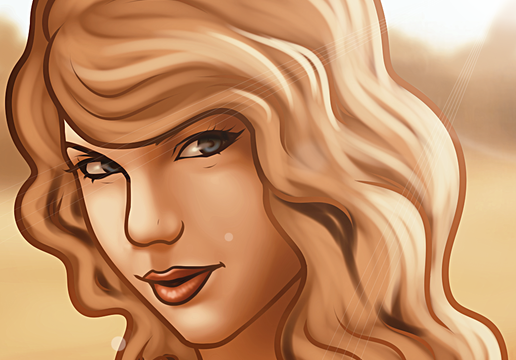How to Shade a 3D Sphere
1
'Kay. We're gonna start by listing off the materials needed first for this tutorial. If you already know, I suggest you skip down to step 9. If not, then follow along with us at step 1. =)
2
1. You absolutely need PAPER! If you don't have that, then, I guess you're drawing on the wall. lol XD
3
2. CD. You don't have to use this. It's only for tracing preferences. If you'd rather free hand a circle, go for it!
4
3. Eraser. You can use any plain eraser for this tut. It's doesn't matter if you got it from a 5 cent bin at Staples or Office Max or you got a super awesome Artist Loft Eraser from Micheal's. As long as it's just a regular eraser, you're fine.
5
4. Pencil Sharpener. You don't need this that much, either, but I recommend it because you're pencils need to be sharp on the sides (that's how shading is, on the side of the pencil).
6
5. Rubber Eraser. This eraser is very easy to use, even though it looks ugly. There's no after effect like eraser shavings with this, nor does it draw out. It feels like silly putty and it's very flexible to use. This will be mentioned quite a bit in
7
6. Blending Tortollion. This is used to blend your shading onto the paper. It makes a ridgy, scratchy drawing look even and well balanced. This will be needed as well but using a rolled up piece of paper towel works as well (for bigger areas).
8
7. Pencils. These aren't original pencils you see at Walmart. These are actual artist pencils. There's no eraser on the back of them so, you need a eraser at all times when working with them. Anyways, there's a bunch of pencil shades but in this tut,
9
Thought I'd pop this in real quick. This is just a breif overview over the concepts being taught in this tut. If there's a step you don't understand as we go through, always refer to this drawing here.
10
Trace the CD or freehand the circle somewhere close to the bottom, without being on the edge, with your lightest pencil, 4H. Then, draw, still using the same pencil number, a somewhat straight line to show the division between contrasting shadings in
11
Begin shading the entire background OUTSIDE of the circle with HB pencil. Try to not get any shading into the circle just yet and if you do, it's okay. Just gently erase the marks with your regular or rubber eraser.
13
Now, take your 2H pencil and begin shading about half of the circle. Leave a small part, as shown, white. This will be filled in later but it will be the lighest of the rest of the circle.
14
This is where it gets tricky. After blending your 2H shading, begin shading the 2H part with HB. You should get dark at the back and gradually lighter in the front. Blend this and start the darker part. This will be done with the 4B pencil. Apply as
15
Then, add what's left on your blender and apply it to the white space. After this, you can lighten up the spot and other spots in the circle to make differences noticeable. Afterwards, draw the outline to the cast shadow behind the circle with the 6B
16
Fill in the shadow behind the circle with your 6B pencil. After, on the right side, darken the top side and bottom side but have the top be darker. The two should differ. The left side bottom and top should be lighter, since the light is hitting that
Comments 0
Details
June 2, 2012
Description: Hey guys! Back with another tut from being off for a week. I'm on summer finally and I thought of creating something I'm not very well known with but I wanted to challenge myself, too. So, I thought of shading. I know... lots of people publish this stuff but I wanted to give this a go since I have nothing on shading at all with graphite. My other tut might be something with charcoal, if I experiment more with them. Anyways, I hope you enjoy this "how to shade a 3D sphere!"

































